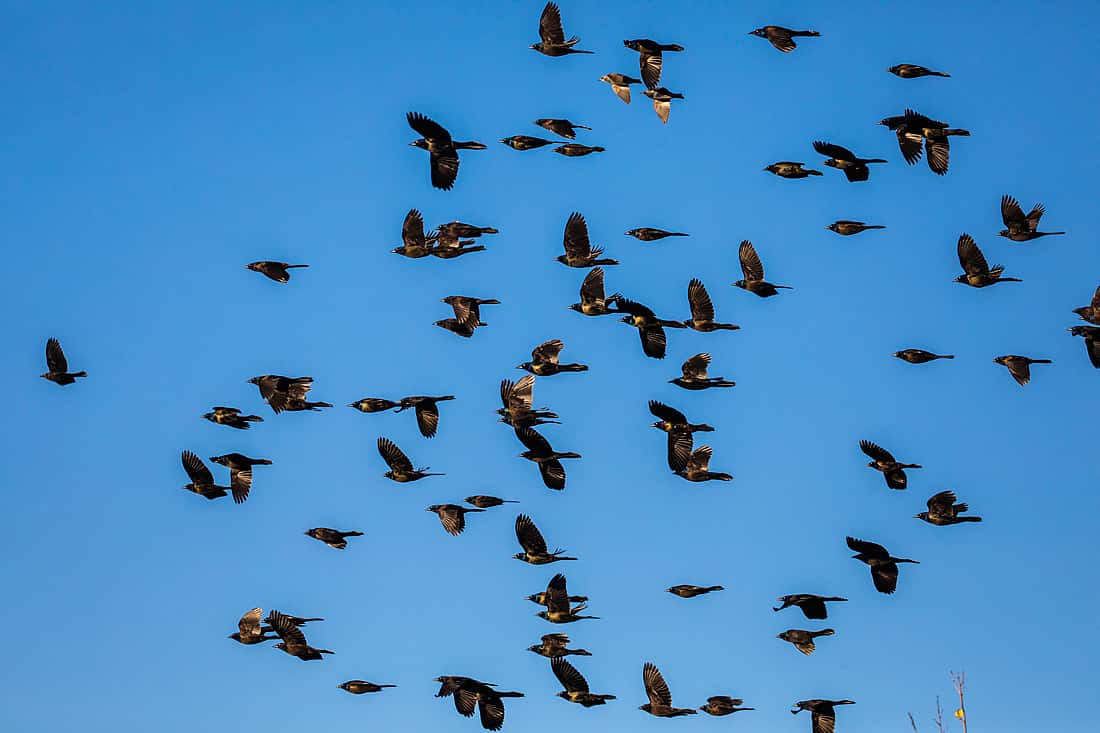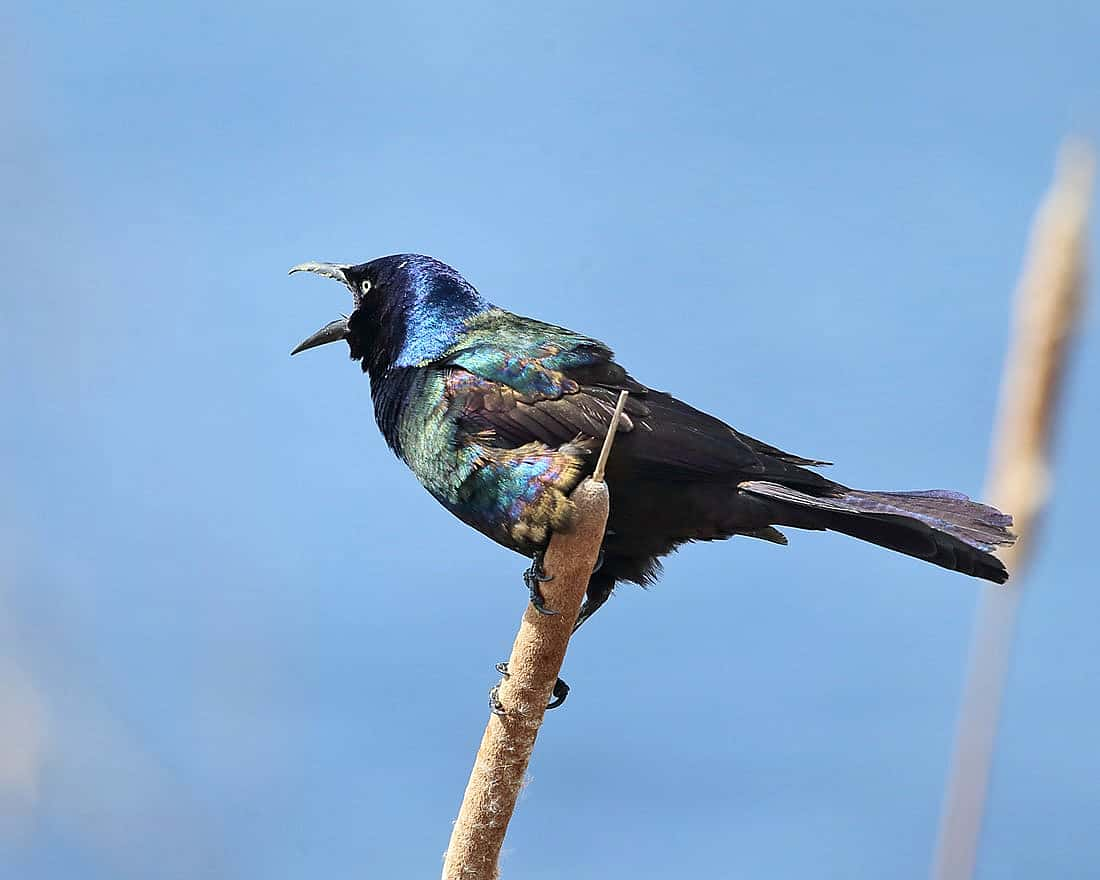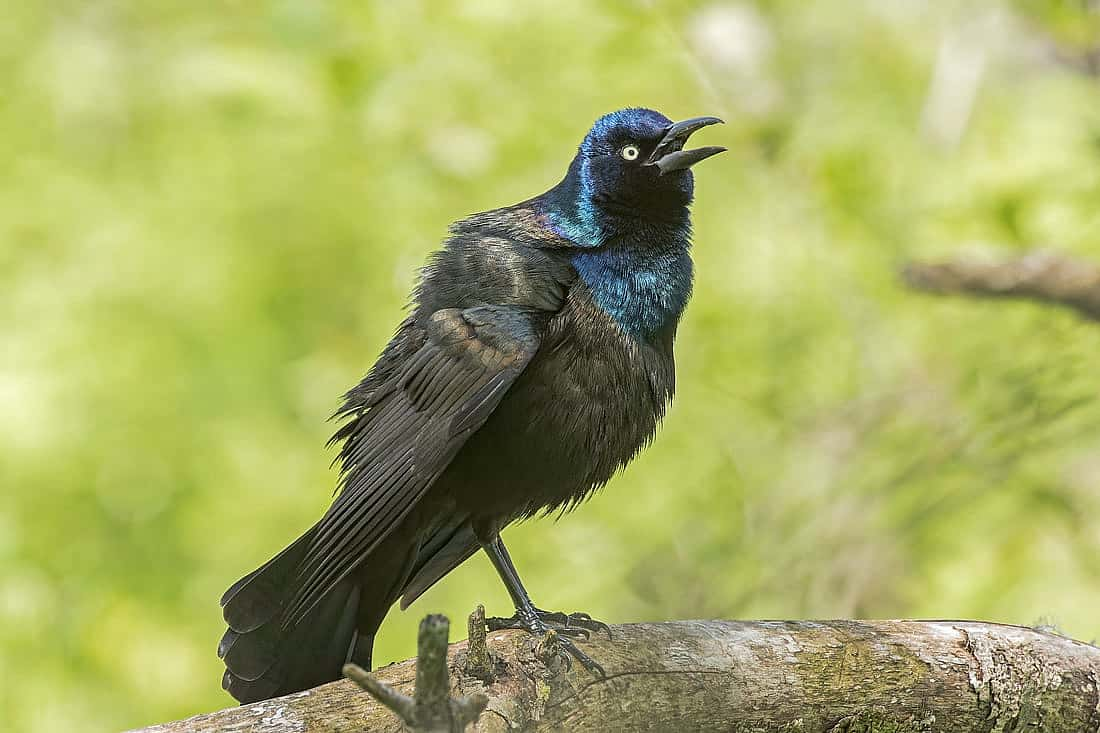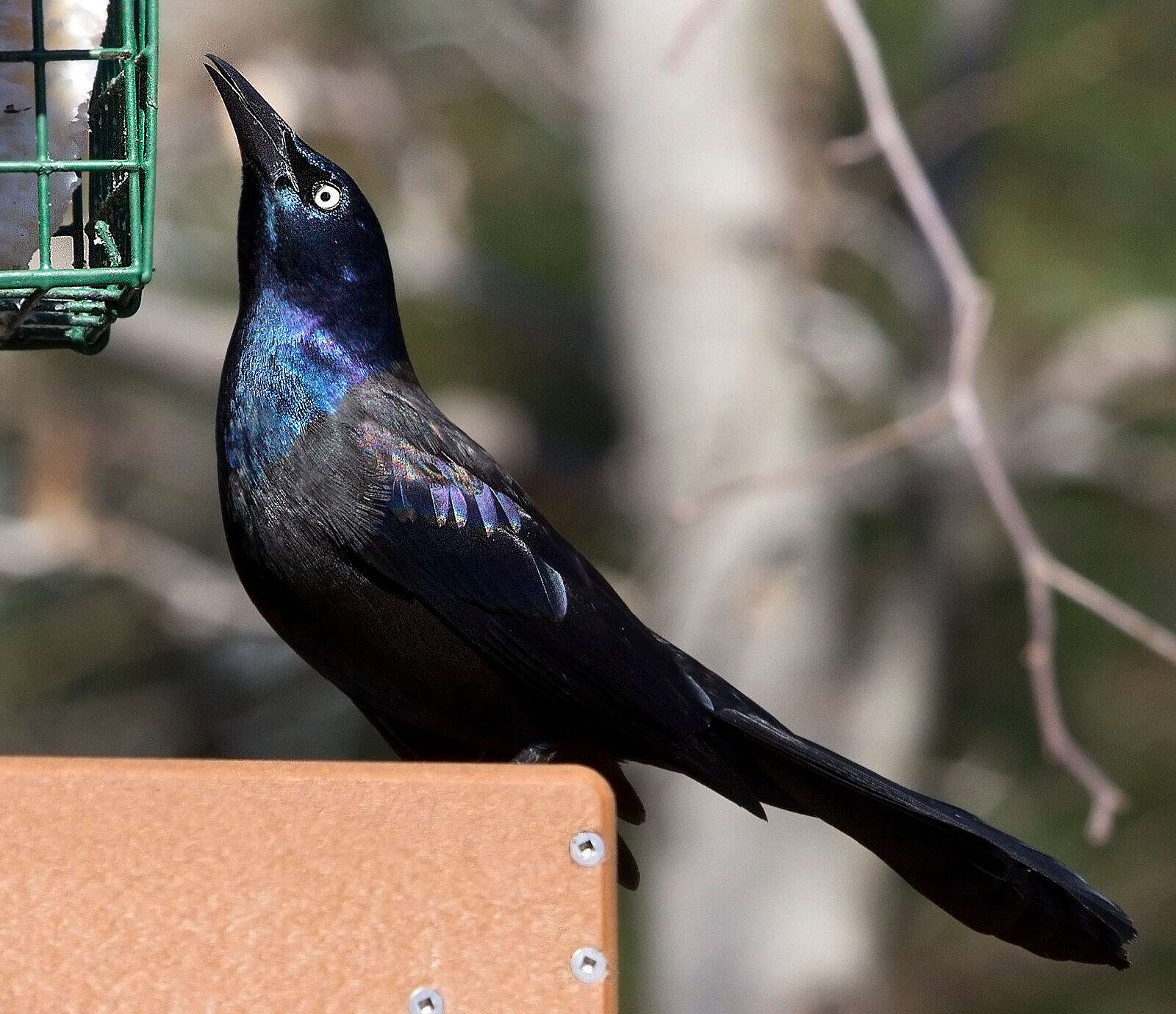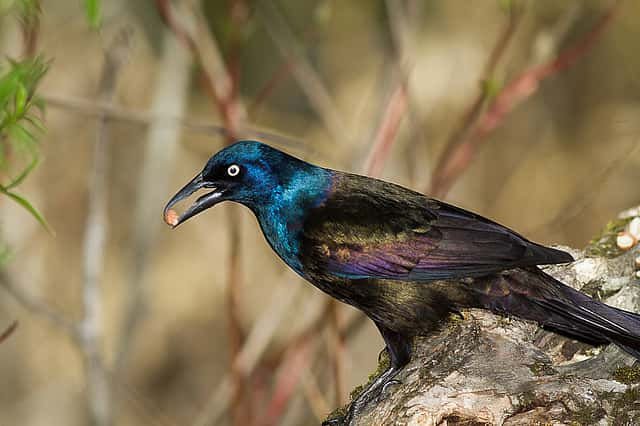
Grackles: Why Do They Look Upward?
The Arrival of Grackles
Grackles (Quiscalus quiscula) are birds that often arrive in large flocks. This arrival is not a welcome one for many people. Due to their numbers and size, they may takeover bird feeders. Since they forage in lawns and agricultural fields, they can be problematic to farmers. According to Cornell’s Birds of the World, grackles may be one of the most significant agricultural pest species in North America.
Identifying grackles can be easy as they can be quite noisy with their constant chattering while perched.
Even so, because of their widely varied diet which includes many kinds of seeds and berries, they are helpful as seed dispersers. Plus, they eat a lot of pesky insects including feeding them to their nestlings.
Type of Grackle Living in Wyoming
There are three grackle species living in the USA: Boat-tailed Grackles, Great-tailed Grackles, and the Common Grackle. In Wyoming, you will find the Common Grackle. Beginning in early spring, I typically get a large number of Common Grackles checking out our bird feeders on a daily basis. In fact they arrive in such numbers, that I was very surprised to recently learn that the IUCN Red List records them as nearly threatened. https://www.iucnredlist.org/species/22724320/131484290
I have to say I always welcome them. I’m not a farmer and I don’t have a garden to tempt them with. Yes, when they arrive each day they are dominant at my bird feeders. However, some of the smaller birds will push between them. Furthermore since grackles spill seed as they feed, other smaller birds simply feed below the feeders. Besides, the grackles don’t hang out here all day.
They Make Me Smile
I have to smile at the way they strut around with confidence as though they own my yard. Plus the iridescent body colors of the males, long keel-shaped tails, and yellow eyes make them very attractive birds. The heads of the adult males are particularly glossy, sometime with a purplish or blue hue.
The characteristic that especially entertains me is the way they point their beaks up at the sky. I read this is called Bill Tilt (Bill-tilt) as well as Sky Pointing. All three species of grackle in the USA display in this behavior.
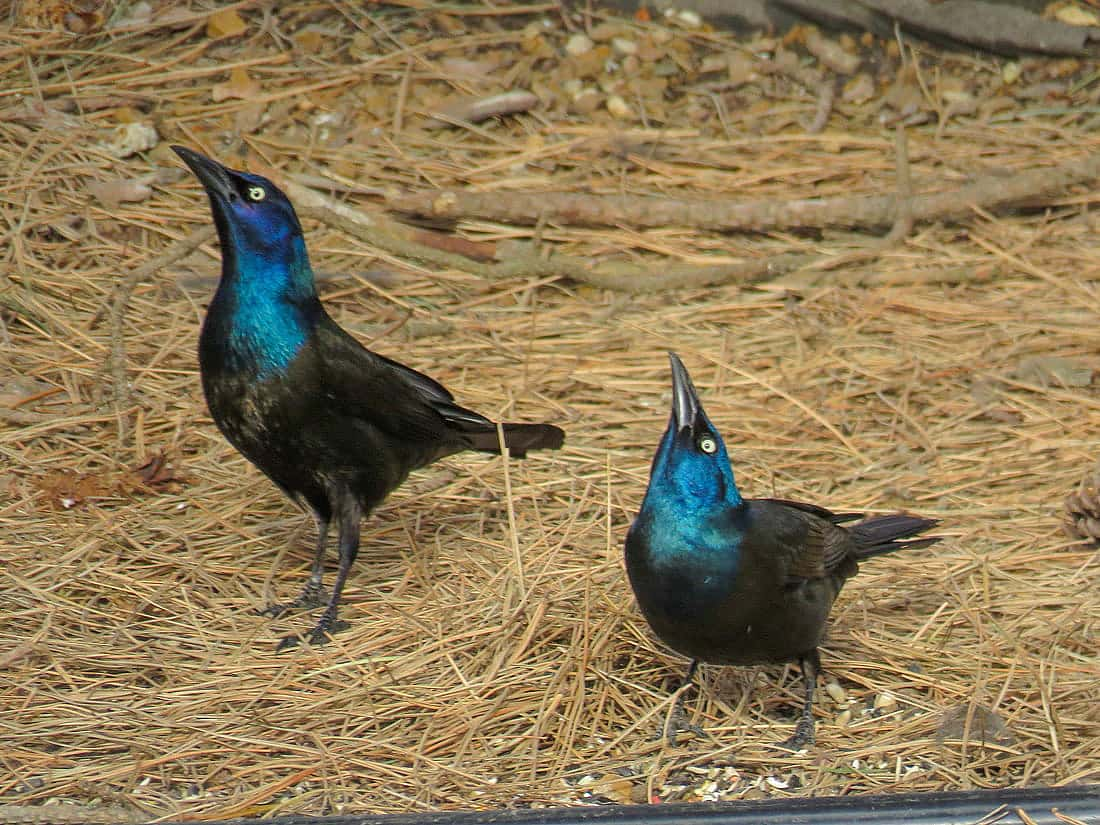
Why Do Grackles Look Skyward?
Contrary to what some people may think, grackles aren’t really looking at the sky. Since their eyes are on the sides of their heads, they would have to tilt their heads to the side if they really want to get a good look at what is above them. Therefore this eliminates the possibility that they are keeping an eye out for predators.
What the grackles are actually doing is tilting their bills upward. Bill Tilt performance is a major part of their breeding behavior. And it isn’t just pointing upward, but the lift must be as high as possible.
Along with this, they may also puff out their chest and at times, make a call that reminds me of a squeaky door. This behavior signals their desire to establish dominance, therefore gaining the attentions of a female. In addition it may also be used to warn other males away.
This video demonstrates the tilt, puffing up, as well as the call. https://www.youtube.com/watch?v=hZa51NPEGH0
Female grackles prefer to choose dominant males as their mates. Dominant males tend to be the strongest, which in turn will more likely produce stronger chicks.
When is the Bill Tilt Performed?
This behavior is mainly observed when there are more males than females present or if there is only one or a preferred female that a number of males wish to win as their mate. At this time you will observe many of the males engaging in this behavior at the same time.
Sometimes the females also perform the tilt. Plus at times the tilt is done when a new bird of either sex arrives and lands with a group.
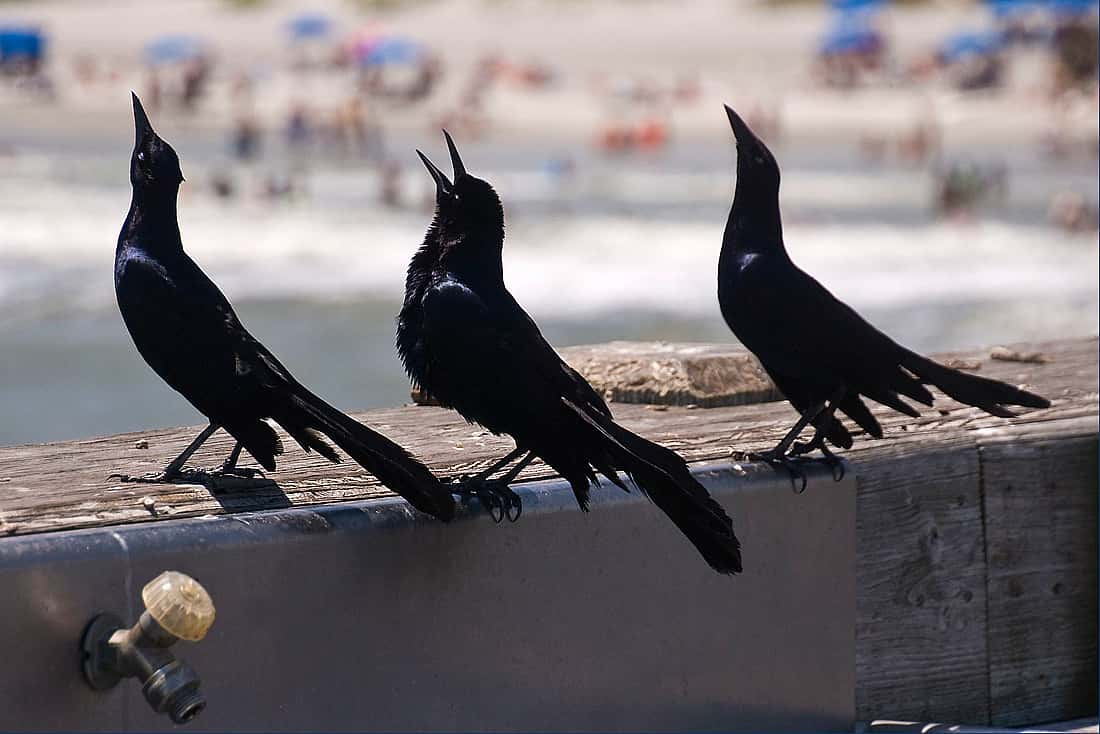
Who Wins?
So how is the dominance determined when a number of males are holding their bill tilt position? The birds are waiting to see who can hold the tilt the longest and highest. This Sky Pointing only lasts for a few seconds. One by one those who can not maintain the correct position will drop out, until the winner is remaining. Once the dominant individual within a group wins the contest, this bird will usually not have to compete again.
Grackles are very social birds, however they may at times become aggressive with each other. Even so, the pointing contest is usually peaceful and generally the final deciding factor in proving dominance and winning a mate.
If you would like to learn more about grackles, including the three types along with their sub species click here: https://www.youtube.com/watch?v=0boVsy_457Y
Photos
A Flock of Grackles by Melissa McMasters, CC by 2.0 Deed Attribution 2.0 Generic License
Common Grackle with Iridescent Feathers Calling by Tom Murray, Attribution-NonCommercial 2.0 Generic License
Common Grackle by with seed by Roland Fortier, Attribution-NonCommercial-NoDerivs 2.0 Generic license
Two grackles courting by Elizabeth Pector, Attribution 2.0 Generic license
Bronze subspecies calling by Larry Hubble, Attribution-NonCommercial-NoDerivs 2.0 Generic license
Three Common Grackles competing for dominance, by Ron Cogswell, Attribution 2.0 Generic license, this license allows for transforming the image as long as changes are indicated. I cropped the image to fit the blog format
Common Grackle by Watts, Attribution CC by 2.0 Generic License
Written By
Anne Hay
Anne Hay has a Bachelor's degree in Elementary Education and a Master's in Computers in Education. She spent most of her working years teaching third grade at Livingston School in Cody, Wyoming. After retiring she began doing a variety of volunteer work for the Buffalo Bill Center of the West’s Draper Natural History Museum. Anne loves nature and has a concern for the environment. She believes that educating the public, so that they will have a better understanding and appreciation for the natural world, is very important. Because of this belief, volunteering at the Center is a perfect fit. She spends time in the Draper Lab, observing eagle nests for Dr. Charles Preston’s long-term research project on nesting golden eagles, writing observation reports of raptor sightings in the Bighorn Basin, and working with the Draper Museum Raptor Experience. Anne states that, “Having a bird on my glove, is one of my all time favorite things in life.”
